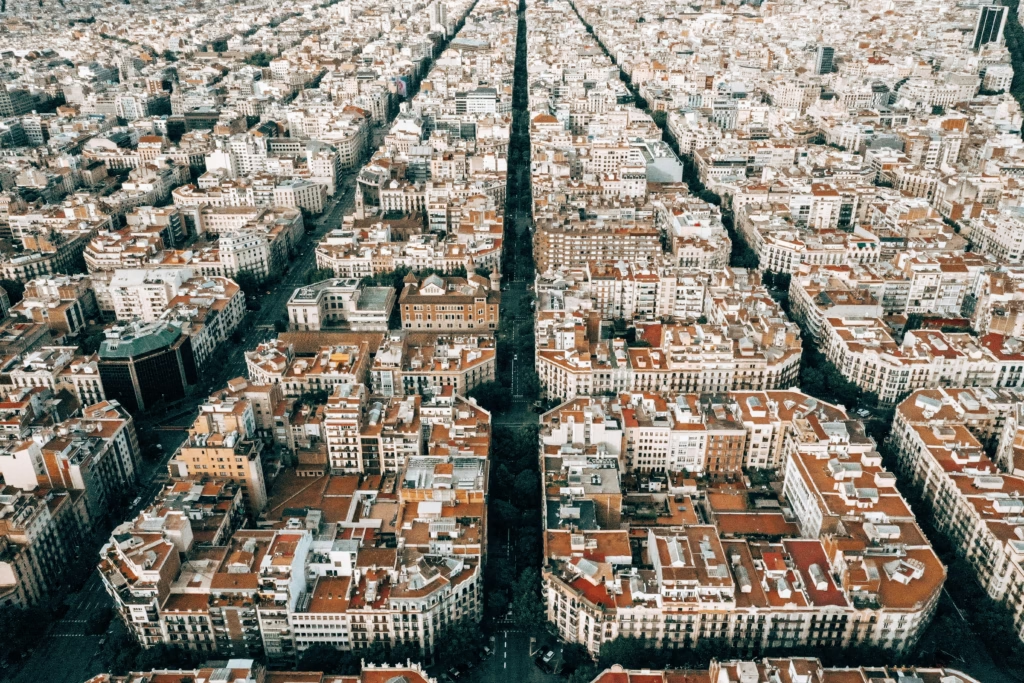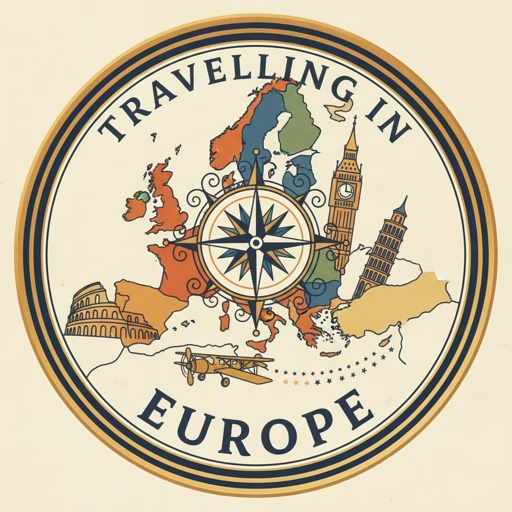Barcelona — a tourist guide

Witty, slightly romantic, and fiercely practical — for people who want Gaudí with their morning coffee and tapas with their sunset.
Barcelona is the kind of city that makes a convincing argument for falling in love twice: once for the skyline (hello Sagrada Família), and again for the food. It’s a modern Mediterranean megacity with a historic heart, a Gaudí obsession, and a nightlife that politely asks you to start dinner at 10 p.m. Read on: this guide covers how to arrive (plane or train), budget airlines, getting around (metro, buses, trams), main sights and ticketing advice, etiquette, where to eat (cheap to splurge), pubs and how to order in them, museums and Gaudí houses, how to get a travel SIM, and a Perfect 3-Day itinerary.
Getting there: planes, trains (and romance on rails)
By plane — Barcelona El Prat (BCN) and budget carriers
Barcelona’s main airport is El Prat (BCN) and it’s served by a long list of carriers — including many budget airlines that fly frequently here (Ryanair, easyJet, Vueling, Wizz Air, Eurowings and others on seasonal routes). If you want cheap fares, be flexible on dates and compare low-cost carriers plus Vueling (Catalonia’s quasi-national low-cost). Book early for summer; last-minute bargains are possible but rare.
Pro Tip: If flights to BCN are pricey, check nearby airports (Girona or Reus in peak season) and consider a bus or train transfer into town — sometimes a little extra travel time saves a lot of money.
By train — fast connections across Spain and beyond
Barcelona is a major Spanish rail hub. High-speed AVE/Avant services connect it to Madrid (roughly 2½–3 hours on the fastest trains) and to other big cities (Valencia, Zaragoza); international daytime and overnight trains also run seasonally. For long-distance speed and comfort, Spain’s Renfe is the obvious choice. If you’re coming from elsewhere in Europe, look for direct trains (or convenient transfers) — and book early for the best fares. The Trainline
Pro Tip: If you plan day trips (Madrid, Girona, Tarragona), reserve high-speed train seats in advance — the cheapest AVE/Avlo fares don’t last.
How to get around Barcelona (easy, efficient, mostly flat-ish)
Barcelona’s transport is efficient, frequent and well signed. You’ll use the metro (subway), buses, trams, and local commuter trains (Rodalies).
Metro (TMB)
- Fast, frequent, and the backbone of city travel. Lines are labeled L1, L2, L3… etc.
- Buy single tickets, T-10 multi-ride (if still offered where you travel), or one of the visitor travel cards described below. Machines accept cards and cash.
Buses & trams
- Complement the metro, reach spots the subway doesn’t (beachfront, Montjuïc lower slopes). Buses run day and night on main routes.
Commuter trains (Rodalies / FGC)
- Use these for quick hops along the coast or to nearby towns (Sitges, Castelldefels). Some regional lines are included in the city transport passes.
Travel cards
- The Hola Barcelona Travel Card gives unlimited public transport (2–5 days) and includes metro, buses, trams and many local trains — great for short stays and airport transfers. You can buy it online or at metro stations. Hola Barcelona
Practical tip: Validate or activate your card the first time you pass through the machines — the countdown starts then. If you prefer pay-as-you-go, single tickets are fine for a light program, but a 3-day Hola pass often pays for itself if you plan sightseeing across town.
The big sights (and how to get tickets without crying)
Barcelona is a postcard that unfolds as you walk. These are the can’t-miss places — and how to avoid queue misery.
La Sagrada Família — Gaudí’s still-working cathedral
Gaudí’s masterpiece is Barcelona’s magnet — extraordinary façades, towering interiors and an ongoing century-long construction project. Buy official tickets in advance (time-slot entry) on the Sagrada Família website; guided and tower-access options exist but are capped daily. If you want photos without crowds, book the earliest slots. Sagrada Família
Park Güell
Gaudí’s park of whiplash curves, colourful tiles and views over the city. Much of the Monumental Zone is ticketed; prebook online if you want a guaranteed entry window.
Casa Batlló and Casa Milà (La Pedrera)
Two of Gaudí’s most playful townhouses in the Passeig de Gràcia area. Both offer timed-entry tickets, audio guides and evening/night visits — book online to skip box-office lines. Casa Batlló
Gothic Quarter & Barri Gòtic
Free to roam. Lose yourself in alleyways, discover medieval squares and Roman ruins. It’s sightseeing at walking pace — wear good shoes.
La Rambla & La Boqueria Market
La Rambla is touristy but iconic; pop into La Boqueria for fruit juices, jamón and tapas stalls. Watch wallets here — it’s a magnet for pickpockets.
Montjuïc & the Magic Fountain
Montjuïc has museums (MNAC art), gardens, cable car and the evening Magic Fountain show (seasonal). Buy museum tickets on official museum sites; check Magic Fountain schedules before planning dinner around it.
Museums
- Museu Nacional d’Art de Catalunya (MNAC) — Romanesque to modern Catalan art.
- MACBA (contemporary art) — Raval’s modernist cube of culture.
- Picasso Museum — early works and intimate rooms; timed tickets recommended for the popular Picasso collection.
Pro Tip: For Sagrada Família, Park Güell, Casa Batlló and La Pedrera — buy tickets on the official websites and pick morning slots to dodge crowds, or get tour packages at GetYourGuide (link below). If you plan many museum visits, look into the Barcelona Card or combined museum passes for savings.
Etiquette: how to behave like a friendly local (or one they tolerate fondly)
- Say “hola” and “gràcies” (or “gracias”) — a little language goes far.
- Dinner starts late. Barcelona eats late — restaurants often fill after 9–10 p.m.
- Don’t expect hush on the beach. It’s public and lively; keep noise reasonable.
- Mind the bike lanes — they are sacred strips for speedy two-wheeled commuters.
- Tipping isn’t mandatory; rounding up or 5–10% for great service is common in sit-down restaurants.
Pro Tip: In small bars, signal the bartender when you want service — they appreciate eye contact rather than shouting across the room.
Where to eat: budget bites to Michelin nights
Barcelona is a culinary playground. Here’s how to navigate calories with dignity.
Breakfast (important ritual)
- Coffee + pastry: local cafés pour coffee the Catalan way (strong, often with milk as “café con leche”).
- Bocadillo: a crusty sandwich, perfect for a portable start.
- Markets: La Boqueria for fruit juices and tapas breakfasts.
Cheap & cheerful
- Tapas bars & bodegas: share plates and sample widely. Look for places away from tourist hotspots for better prices.
- Menu del día: many restaurants offer a midday set menu (starter + main + drink) at a good price.
Mid-range & splurge
- Seaside restaurants in Barceloneta and Port Olímpic: fresh seafood and paella (prices vary — check the menu).
- Fine dining: Barcelona hosts several Michelin-starred restaurants (Lasarte, ABaC, etc.) — reserve well in advance.
Pubs and how to order
- Typical line: “Una caña, por favor” (a small draft beer) or “Una cerveza, por favor.” If you want a specific beer, name it. To ask for the bill, say “La cuenta, por favor.” English is widely understood in tourist areas, but your effort in Spanish or Catalan is appreciated.
Pro Tip: Try Catalan wines (DO Penedès, DO Priorat) and the local vermouth ritual — apertif culture is alive and well.
Museums & Gaudí houses — best visiting strategy
- Prioritize the Sagrada Família and one Gaudí house (Casa Batlló or La Pedrera) per day to avoid “museum fatigue.” Book timed tickets for these attractions on their official sites; evening or late afternoon slots sometimes feel less crowded. For art museums (MNAC, Picasso Museum, MACBA), check if free entry hours exist (many museums have weekly free times). Sagrada Família
Pro Tip: Buy tickets directly from official venues — resale sites can inflate prices and restricted visitor numbers mean only official tickets are 100% reliable.
How to get a travel SIM / mobile internet in Barcelona
Prepaid SIMs are easy to buy in Barcelona. Major providers include Movistar (Telefonica), Vodafone, Orange and Yoigo, plus MVNOs and tourism-focused eSIMs. You can purchase starter packs at the airport, mobile operator shops, many supermarkets and kiosks. Expect to show ID for registration; eSIM options are increasingly convenient for short stays. Compare data bundles before you buy — tourist SIMs at the airport are convenient but sometimes pricier than city shops. eSIM.Net
Pro Tip: If you need a lot of data (map use, uploads), buy in-city from an operator store for better prices and easier activation help.
Perfect 3-Day Itinerary (efficient, romantic, and delicious)
This plan balances major sights with local flavor and time to breathe.
Day 1 — Gaudí + Gothic Heart
- Morning: Start early at Sagrada Família (prebooked ticket). Enjoy the interior light and organ. Sagrada Família
- Late morning: Walk Passeig de Gràcia: admire Casa Batlló and Casa Milà (La Pedrera) (book one or both; timed entry). Casa Batlló
- Lunch: Tapas in Eixample.
- Afternoon: Stroll the Gothic Quarter and visit the Cathedral; grab a coffee in Plaça Reial.
- Evening: Dinner in El Born, wander to the waterfront for a nightcap.
Day 2 — Market life, museums and Montjuïc sunset
- Morning: La Boqueria market for breakfast and a juice.
- Late morning: Head to MNAC on Montjuïc or MACBA in Raval depending on taste.
- Afternoon: Cable car or funicular up Montjuïc; explore gardens and the castle.
- Evening: Catch the Magic Fountain show (check season and times) and dine nearby.
Day 3 — Beach, people-watching, and a slow goodbye
- Morning: Beach walk at Barceloneta and a leisurely brunch.
- Late morning: Take a seaside stroll toward Port Olímpic or the quieter Bogatell beach.
- Afternoon: Optional day trip (Girona, Sitges) or extra museum (Picasso Museum).
- Evening: Farewell dinner — try a multi-course modern Catalan menu or a seaside seafood restaurant.
Timing tip: Barcelona loves evenings. Reserve dinner after 9 p.m. if you want the full local vibe.
Practical final notes
- Safety & pickpockets: Barcelona is safe but crowded tourist areas are favoured by pickpockets. Keep valuables secure. (Check Tourist Scams)
- Language: Catalan and Spanish are both official — English is widely understood in tourist zones but a little Catalan or Spanish goes a long way.
- When to visit: Spring (May–June) and early autumn (Sept–Oct) are ideal for fewer crowds and pleasant weather. High summer is hot and busy.
- Accommodation: From W Barcelona and Hotel Arts (luxury) to boutique stays in Gràcia and budget hostels in Raval, there’s a match for every price point. Book early for summer and festivals.
Pro Tips
- Buy Sagrada Família and Gaudí-house tickets on the official sites weeks before peak season. Sagrada Família
- Use a 3- or 4-day Hola Barcelona travel card for unlimited public transport if you’re sightseeing heavily. TMB
- For train day trips book AVE/Avlo early to snag cheap high-speed fares. The Trainline
- Get a local SIM in-city for better rates than airport kiosks; compare operator bundles. eSIM.Net
Barcelona is simultaneously grand and intimate — a Mediterranean romance where every corner has a story, every meal is a promise and every sunset asks you to stay for an extra glass of wine. Whether you came for Gaudí, gastronomy, beaches, museums or nightlife, Barcelona repays curiosity with a generosity that’s hard to put into a single guide. Pack comfy shoes, an appetite, a flexible schedule — and a second passport photo for the inevitable “one more photo” moment at Sagrada Família.

Can’t travel yet? Binge the world from your couch—Amazon Prime’s travel shows are basically teleportation.
Click here for a 30-day free trial and start globetrotting from your couch.
(Affiliate link. If you click and buy something, I may make a small commission. Think of it as you tipping me without spending extra)
